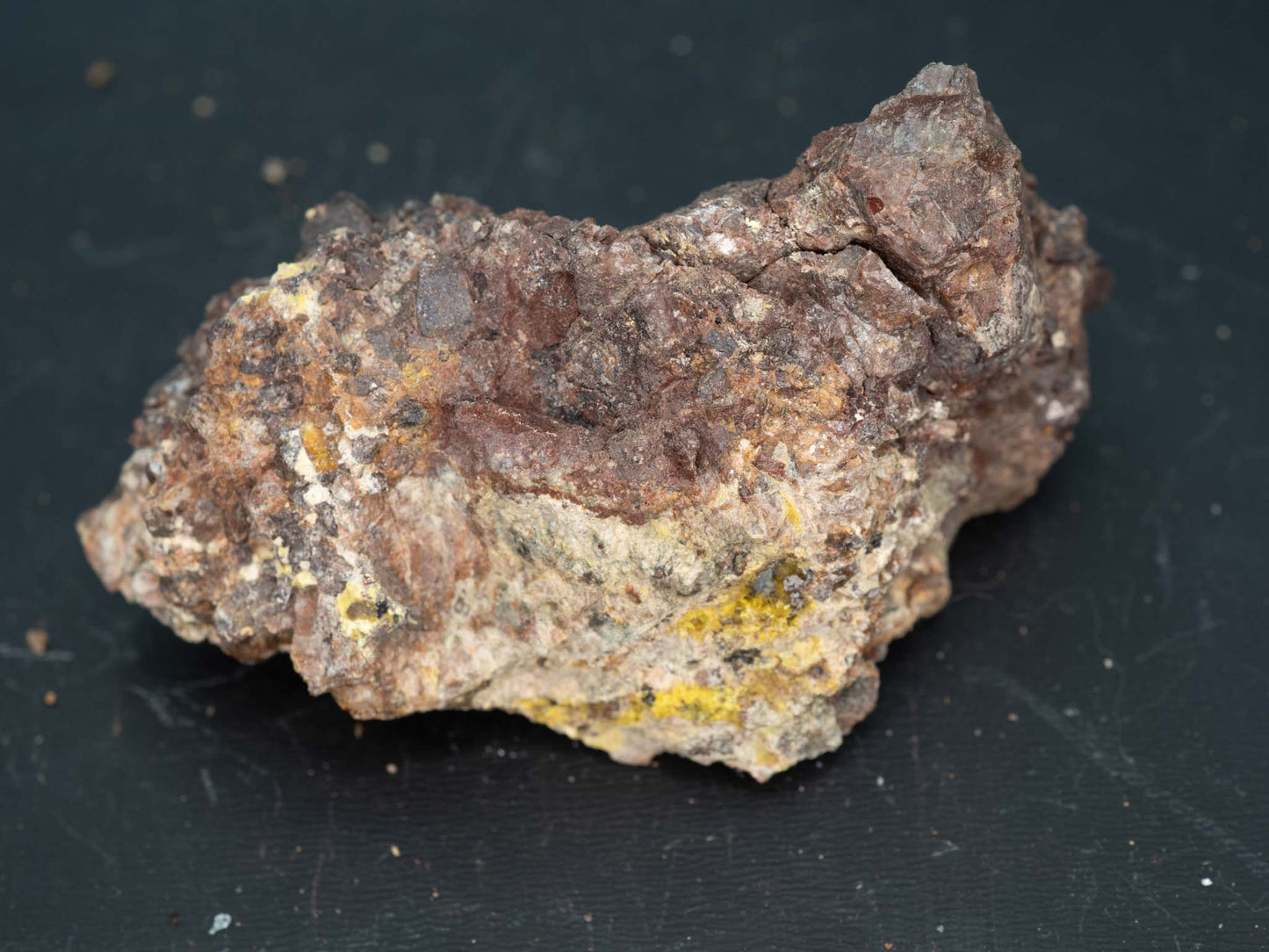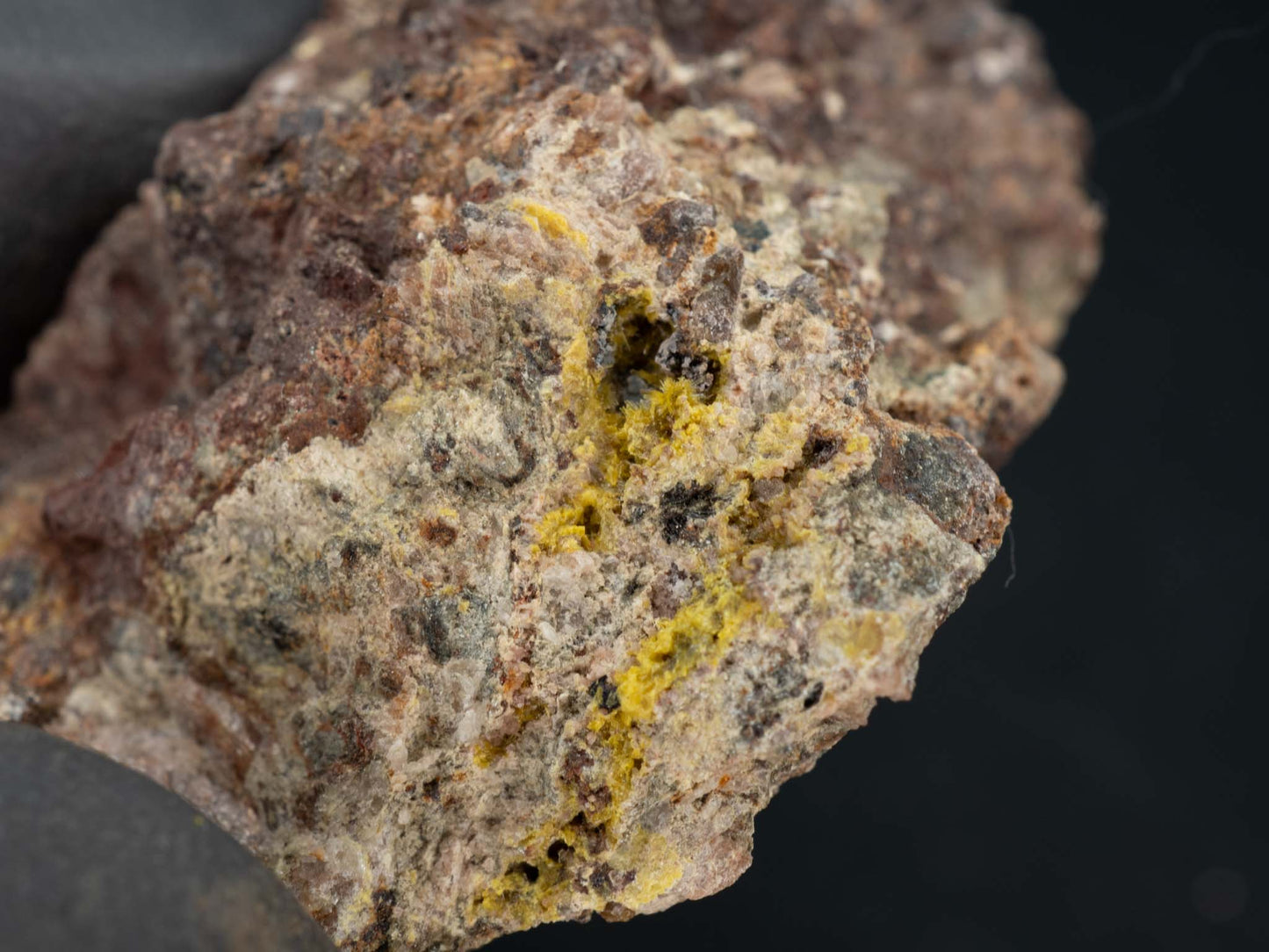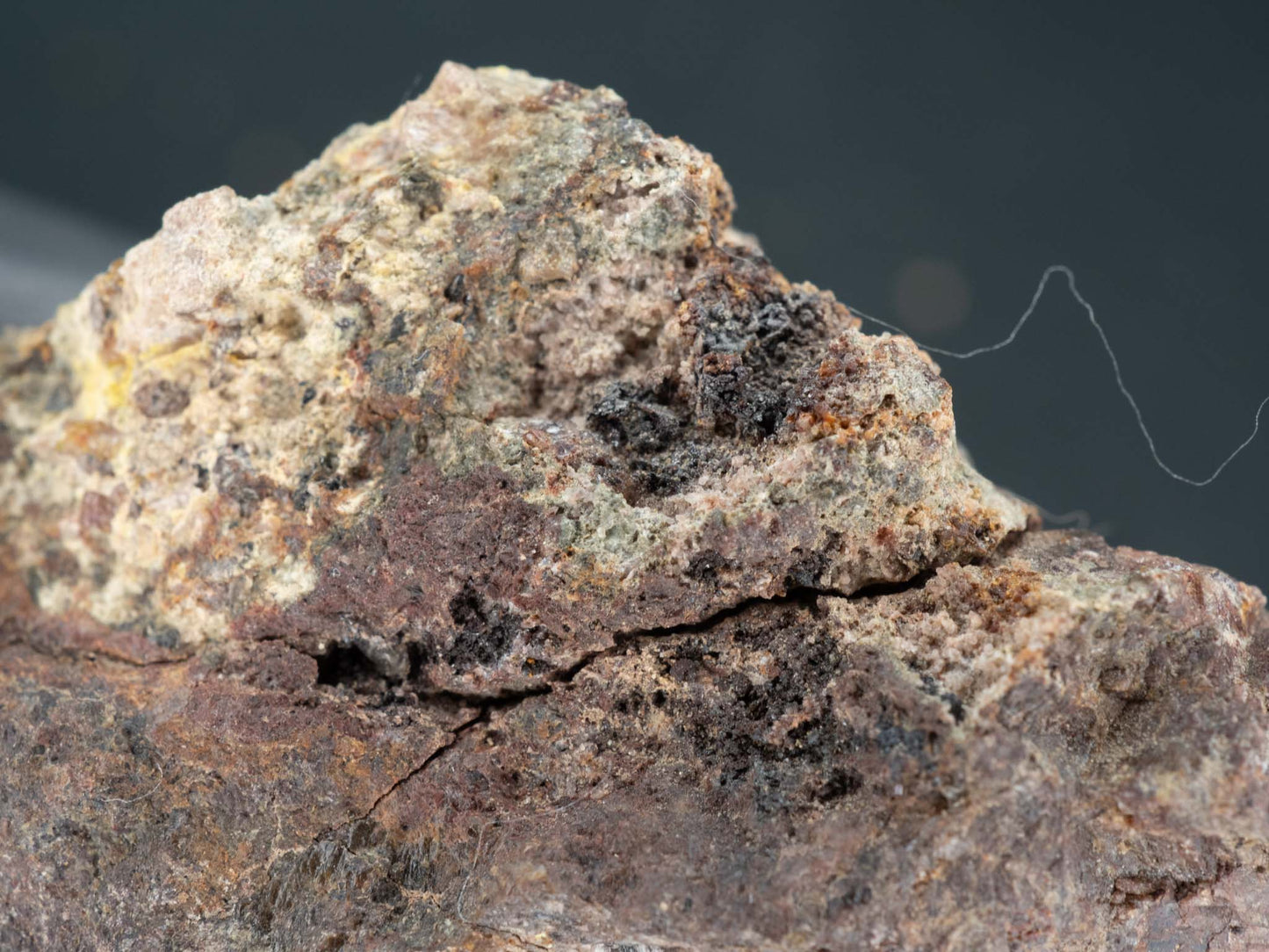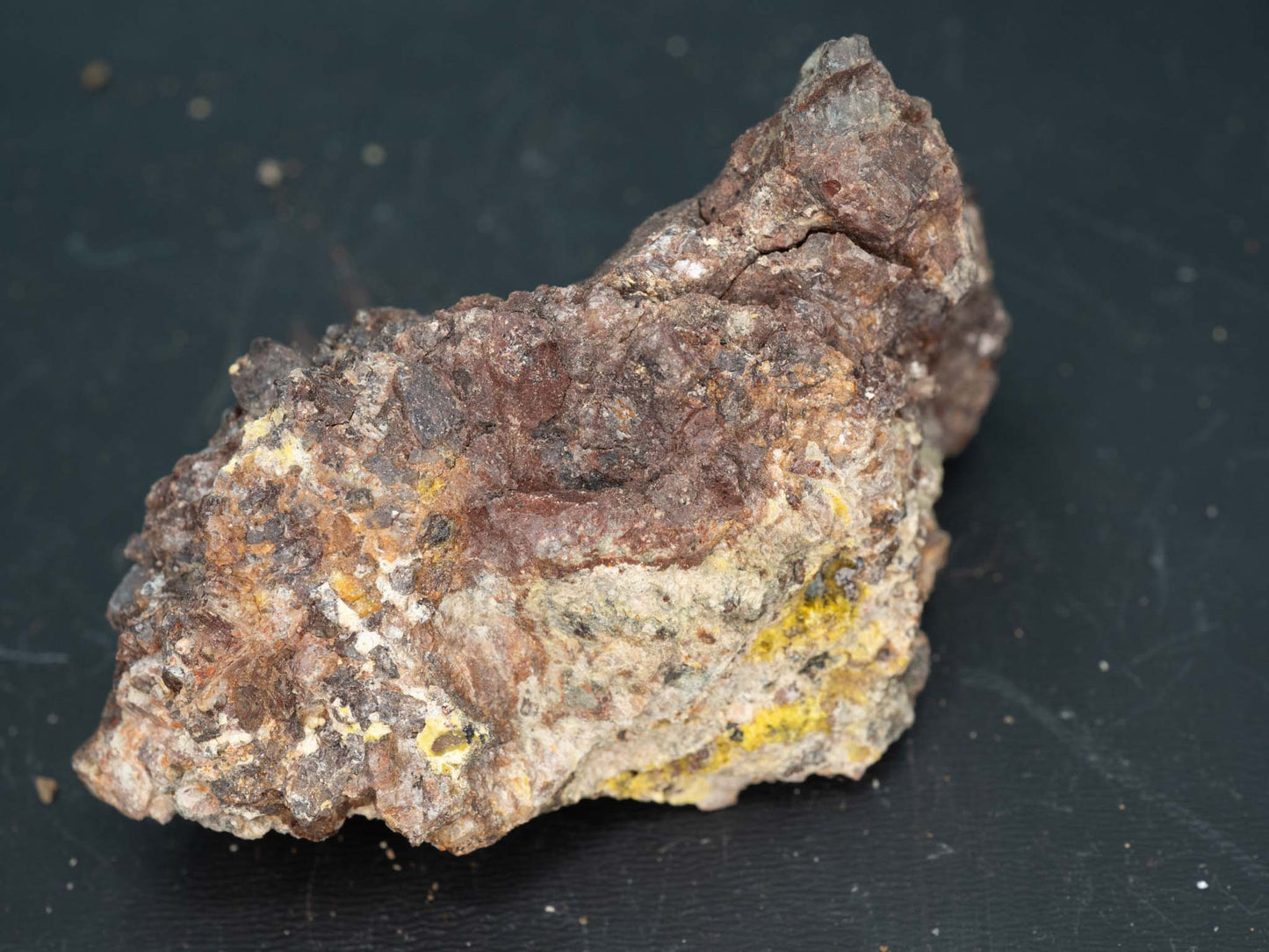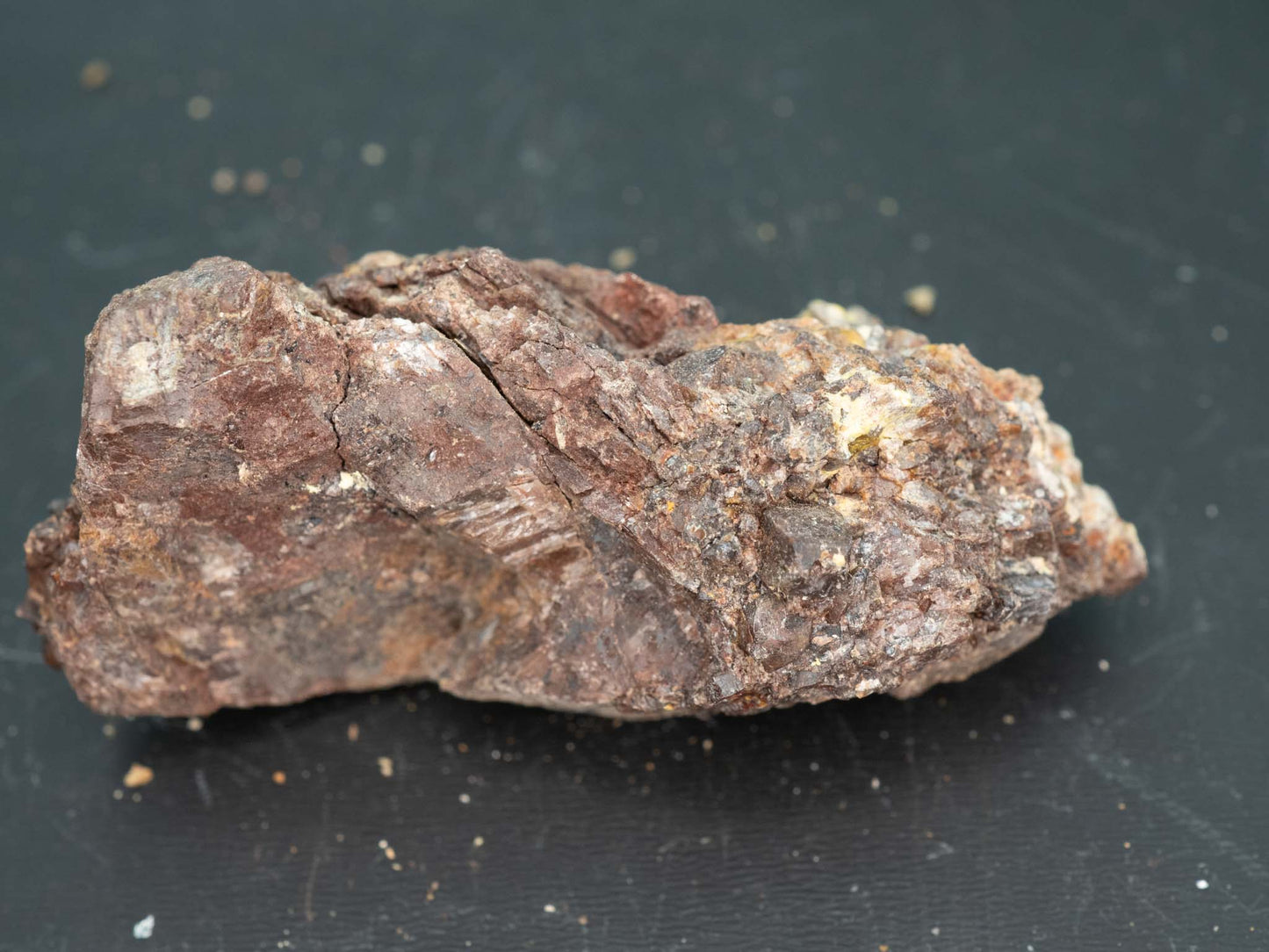Rad Man Minerals
Parauranophane & Cyrtolite Zircon - Madawaska (Faraday) Mine, Faraday Township, Hastings County, Ontario, Canada
Parauranophane & Cyrtolite Zircon - Madawaska (Faraday) Mine, Faraday Township, Hastings County, Ontario, Canada
Couldn't load pickup availability
 Ca(UO2)2(SiO3OH)2 · 5H2O Zr[(SiO4),(OH)4]
Ca(UO2)2(SiO3OH)2 · 5H2O Zr[(SiO4),(OH)4]
Parauranophane and Cyrtolite Zircon are captivating minerals found at the historical Madawaska (Faraday) Mine, nestled in Faraday Township, Hastings County, Ontario, Canada. Parauranophane is a rare uranium silicate mineral with a vibrant yellow to greenish-yellow hue, often forming fine, fibrous to acicular crystal aggregates. It is typically found as a secondary mineral in uranium-rich deposits, where it forms from the alteration of primary uranium minerals. At the Madawaska Mine, parauranophane is frequently associated with other uranium-bearing minerals, creating striking specimens that are highly prized by collectors. Its brilliant coloration and delicate crystal structures reflect the unique geochemical processes at play in the mine's Precambrian host rocks.
Cyrtolite zircon, a variety of zircon rich in rare earth elements and uranium, adds another layer of intrigue to the mineral assemblage at the Madawaska Mine. Cyrtolite often displays a rich, dark brown to black coloration and features intricate zoning patterns, highlighting its complex formation history. The presence of radioactive elements such as uranium and thorium gives cyrtolite its distinctive metamict texture, where its internal crystal structure has been partially disrupted over geological time. Together, parauranophane and cyrtolite zircon showcase the Madawaska Mine's legacy as a significant site for uranium exploration and its role in revealing the rich mineralogical diversity of the Canadian Shield. Collectors and geologists alike are drawn to these specimens for their beauty, rarity, and the fascinating geological stories they tell.
This area is now closed down and rehabilitated, so no new specimens will be coming out of this locality.
Approx. specimen size: 55mm x 55mm x 25mm
Approx. specimen activity on an SE International Ranger EXP: 15000 cpm
